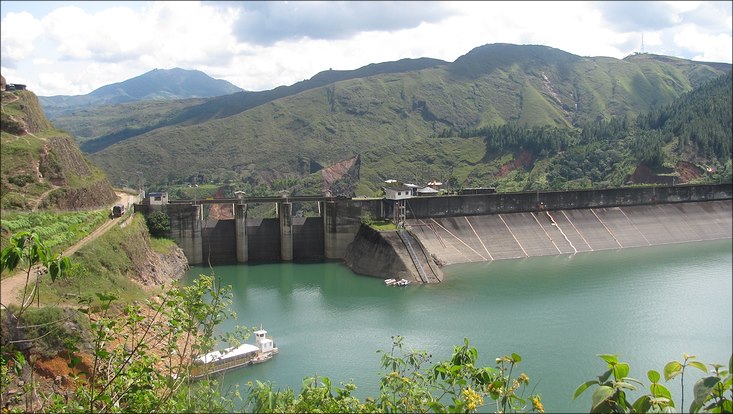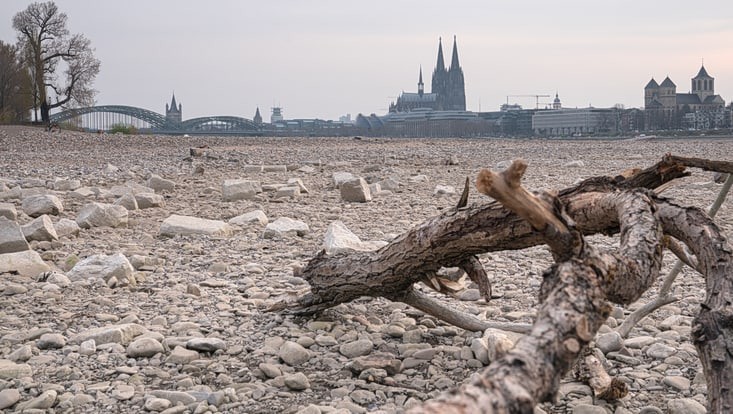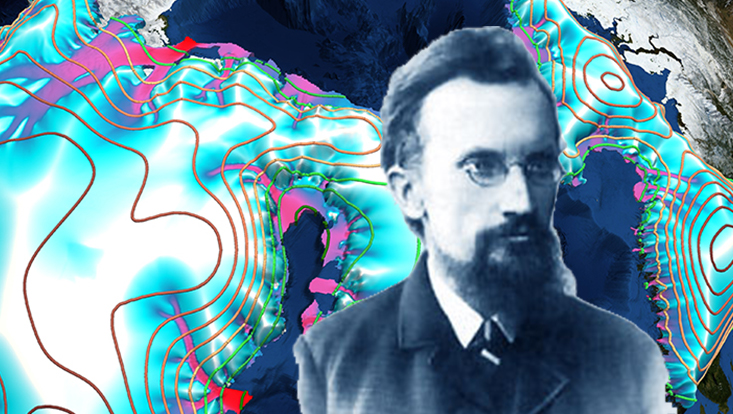Climate Change: Colombia’s Longest River Needs to Be Managed
4 August 2021, by Martha Bolivar

Photo: CC-BY-Fabian

In northern Colombia, the Magdalena River flows into the Caribbean Sea. From source to delta, this mighty river is over 1,600 kilometers long, and its drainage basin is roughly the same size as that of the Rhine. Due to climate change, droughts are now becoming longer here, while at the same time, floods are becoming more frequent. Furthermore, the economy and the population have grown significantly – leading to a huge increase in water consumption. Agriculture, too, consumes tremendous amounts of water. In addition, today the Magdalena River supplies roughly 70 percent of the country’s total hydroelectric power.
I’m interested in how the region can reconcile energy production and irrigation in the future. In order to determine how water management like this can be optimally designed, at the Center for Earth System Research and Sustainability (CEN) I have tested several scenarios using a computer model I created. In addition, I have combined various prognoses regarding changes in the climate and society, and taken key technical calculations into account: how full will the reservoirs be, how much water will be available, and how high will water consumption be in the future?

My simulations show that, even within the next 20 years, at peak times water for agriculture, private households and industry will be in short supply. Therefore, the infrastructure should be expanded with dams and reservoirs in advance in order to increase storage capacity and meet water needs up to the year 2100.
And what about hydroelectric power? My findings show that conflicts between energy production and irrigation mainly arise in January, when it’s especially dry. At this time, the crop fields need to be irrigated intensively. This poses a dilemma, since at the same time there isn’t enough water in the reservoirs to cover electricity production when the energy demand is particularly high. In my hometown of Santa Marta, at such times there is often no power for hours at a time.
What could the solution look like? The capacity of the dams and reservoirs has to be increased by the year 2100 in order to ensure adequate supply for households, agriculture and industry alike. This will require substantial investments, but the subsequent operational and maintenance costs will be relatively low.

But how can investments be used to yield the optimal social benefit? To answer this question, I investigated e.g. a number of ways in which such decisions can be made: in the first option, the decision-maker dynamically adapts the management to compensate for changes. In the second option, a more shortsighted decision-maker makes investments based on the assumption that the current water supply and demand will also apply in the future. A third decision-maker assumes that the supply will remain constant, but the changes in demand will be similar to those in the past decade. What this tells us: skillful management is key. Here my models can help local authorities plan proactively and invest optimally in order to ensure a sufficient water supply for future generations. As a result, the economic benefit could even increase by US$ 120 billion by the year 2100. However, dam building must not infringe on human rights, and the far-reaching consequences of changing the natural environment have to be carefully balanced against the economic benefits.
Martha Bolivar
Martha Bolivar is a hydraulic engineer hailing from Colombia. She completed her doctoral dissertation at Universität Hamburg’s Research Unit Sustainability & Global Change.
Newspaper: This article was first published as a guest article in the Hamburger Abendblatt as part of a monthly series on climate research. Find all articles of the series here.


